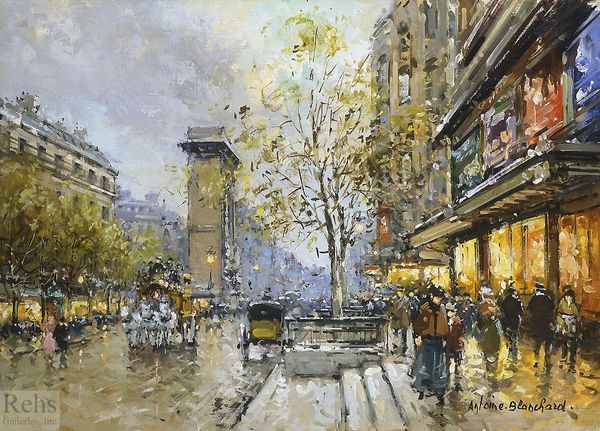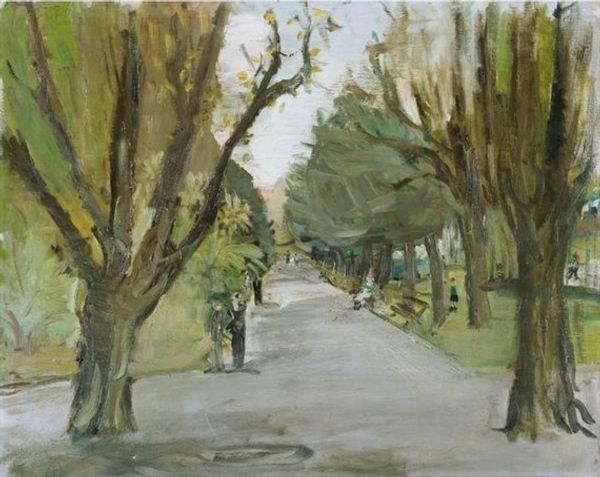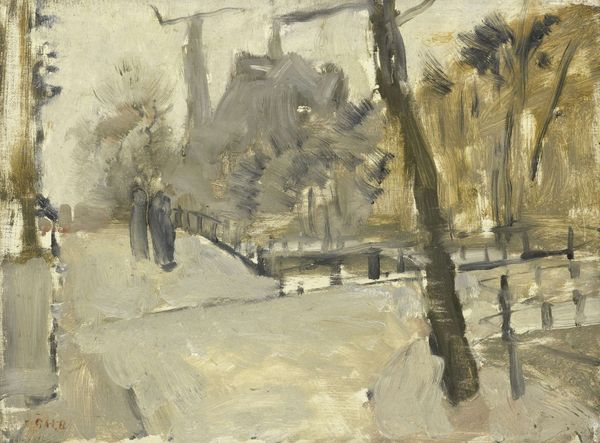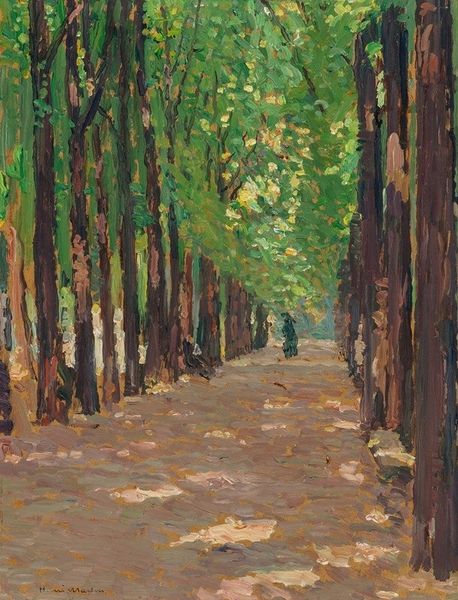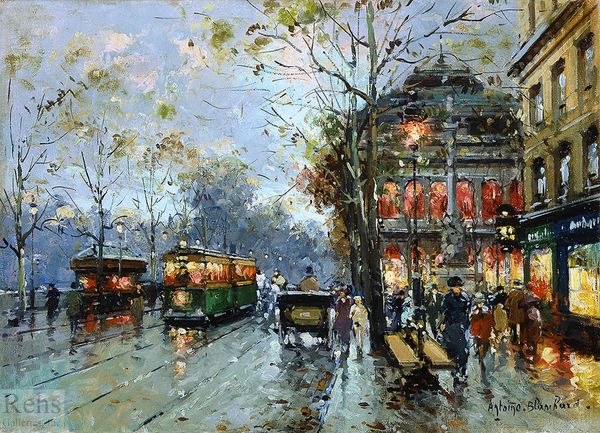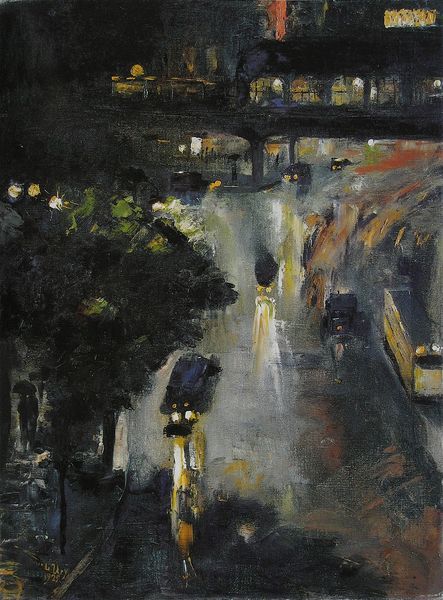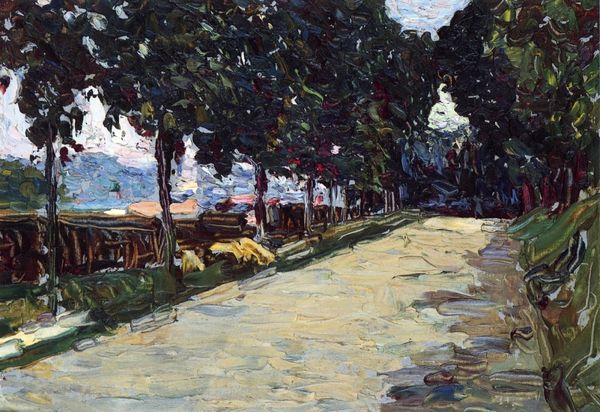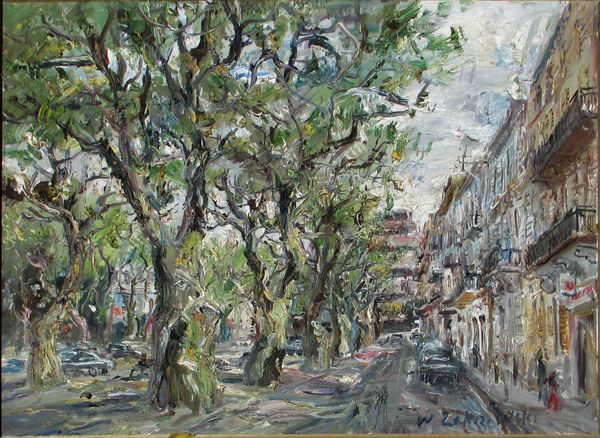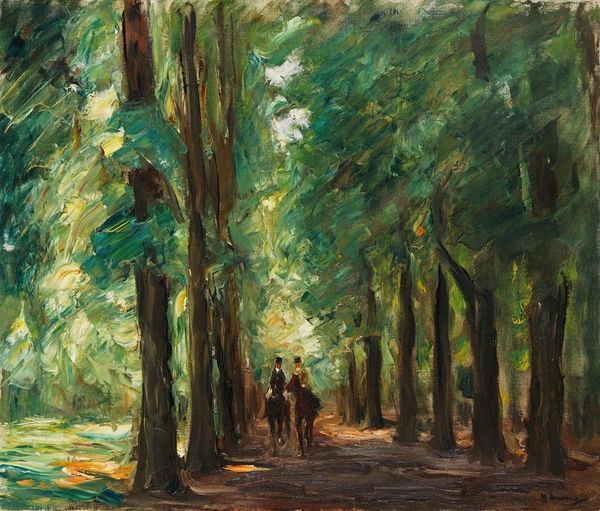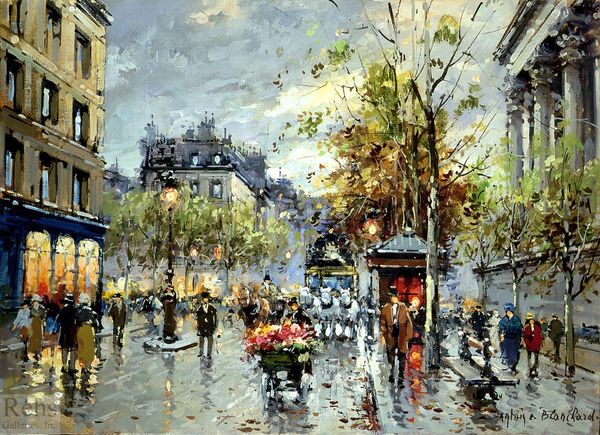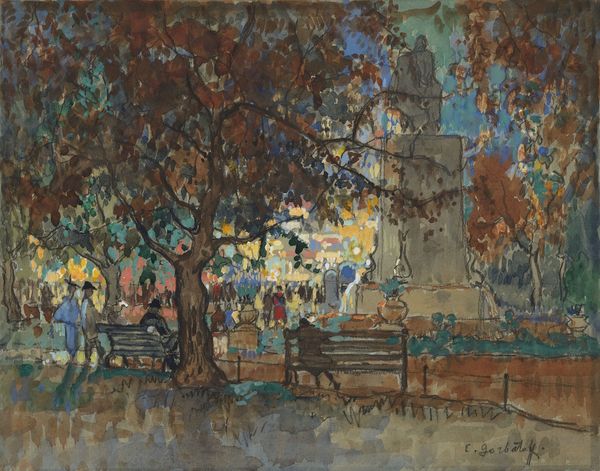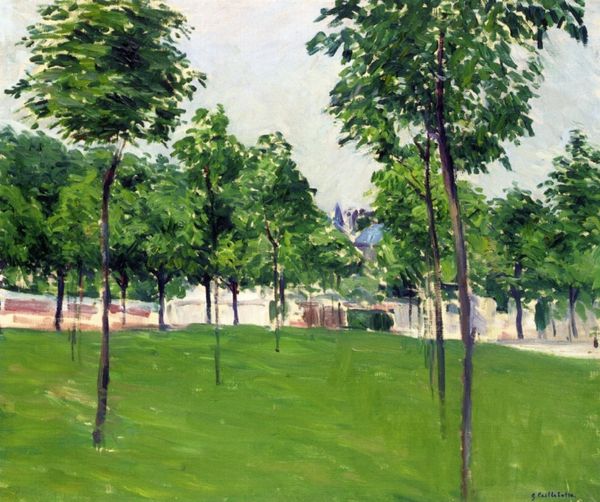
Copyright: Public domain
Curator: Here we have Lesser Ury's "Berliner Strasse im Sonnenschein," painted in 1920. The medium, of course, is oil paint on canvas. Editor: It strikes me immediately as both dynamic and transient. The application is quick, gestural. You can almost hear the rumble of the streetcar. Curator: Note the composition. The verticality of the trees flanking the street creates a series of framing devices, leading the eye towards the vanishing point. It masterfully employs perspective. What do you make of the handling of light? Editor: The light definitely softens the grit, which would have been significant with so much mechanized traffic at the time. I wonder about the actual street conditions? Were these new cobblestones being laid for increased efficiency, or had Ury possibly just observed the immediate effects of rain? Curator: Fascinating. But observe how the dabs of yellows and greens break up the solid masses of the trees, dissolving their forms into pure optical sensation, right? It anticipates later abstraction while remaining grounded in observation. Semiotically, the avenue functions as an axis mundi. Editor: I see it more practically. Consider the urban workforce, for example. How would they interact with a space increasingly occupied by vehicles and divided by infrastructural improvements? Ury presents the raw infrastructure. Curator: But what about the sublime use of color, that chromatic intensity! I would argue, from a theoretical perspective, that these visual strategies mirror the philosophical currents of the period. A vital engagement! Editor: Or simply an immediate capturing of the lived conditions around him. A material document in its own right. Which begs a more fundamental question of accessibility of modern advancements such as personal vehicles versus dependence on communal resources such as the public streetcar. Curator: Well, I would offer that it serves to show that form and color serve a deeper truth in the chaos and dynamism of modern existence, revealing order within what initially appears unstructured. Editor: Still, the fact that he used readily accessible oil paints—a byproduct of industrial expansion—to capture daily routines reminds us of the labor and consumption embedded in modern art itself. Thank you, it has been truly interesting to discuss it with you. Curator: The visual richness is undeniable. It's been a pleasure examining it together.
Comments
No comments
Be the first to comment and join the conversation on the ultimate creative platform.
